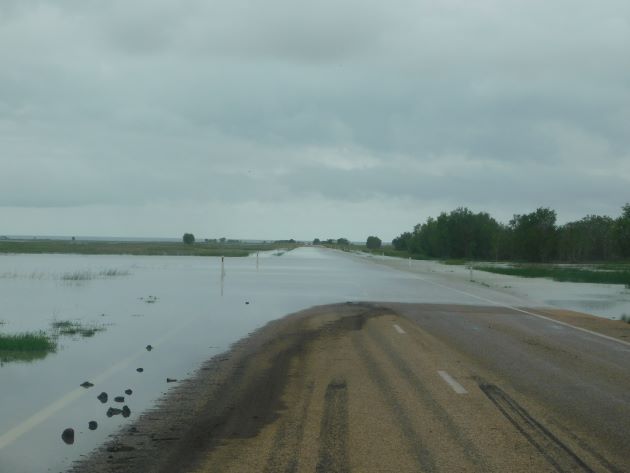
Last week I mentioned that we had an incredible 564mm over 48 hours here in Broome. It often rains a lot more out of town and with the exceptional rainfall recently we expected the one and only highway out of town to be flooded in both directions. It often floods across Roebuck Plains when we have good rainfall and so that is where we headed on Sunday. It is only a short drive out of town to go to the Roebuck Roadhouse, where the Hoopoe showed up in 2011. We then drove the eight kilometres to the edge of Roebuck Plains and as we came down onto the plains we could clearly see there was water flooding over the highway in several places.
The header photo is the first flooded section of highway and the water was really rushing under the highway through the culverts at tremendous speed. The highway remained open, because the deeper sections were still passable, but of course you needed to stay on the bitumen. The middle of the highway was the best place to drive in the flooded areas, because already the bitumen is starting to fail along the edges. As you can see, the weather was not ideal for photography, but we were out to see what had arrived in the area now the land has flooded.
Already many birds have arrived and no doubt many are thinking of breeding. Within days of the rainfall event there are tadpoles providing a food source and also grasshoppers. The Purple Swamphens were quite at home either beside the edge of the highway or along the submerged fence-line.
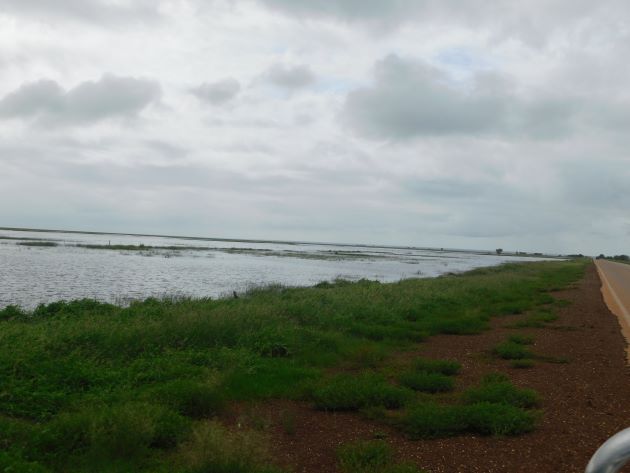
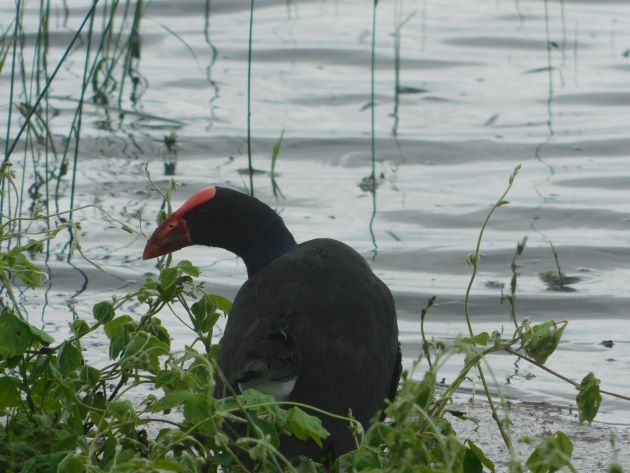
Purple Swamphen beside the highway
The Masked Lapwings were living dangerously either on the highway or the edge of the highway. They were reluctant to move and that is not going to end well if they try to take on the traffic.
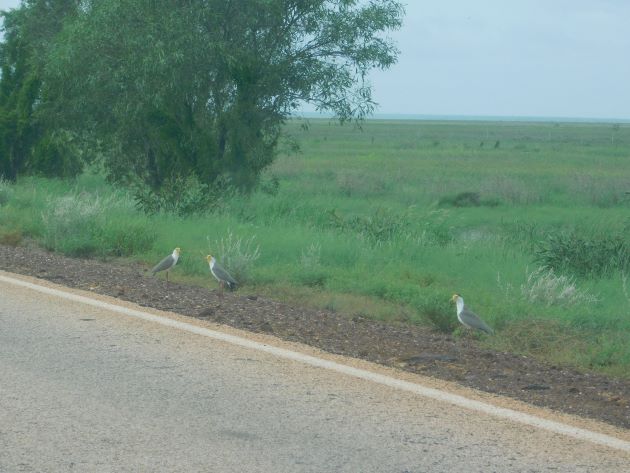
Masked Lapwings
Normally the Australasian Pipit and Singing Bushlarks are in the vegetation feeding. The land was so flooded that they were all over the bitumen. They moved to the edge as we approached and continued feeding.
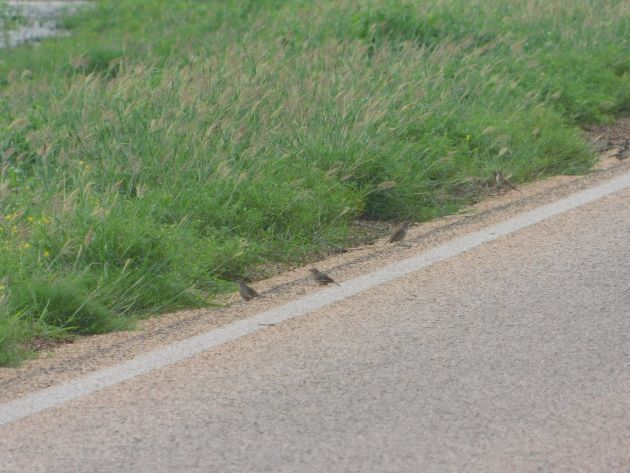
Singing Bushlarks and Australasian Pipit on the edge of the highway
The water was visible for as far as you could see and the station property is on both sides of the highway. We continued to drive through long sections of flooded highway that was mostly around 300mm deep. The plains are approximately fifteen kilometres across and it usually takes about an hour to drive it each way when you are being distracted by nature!
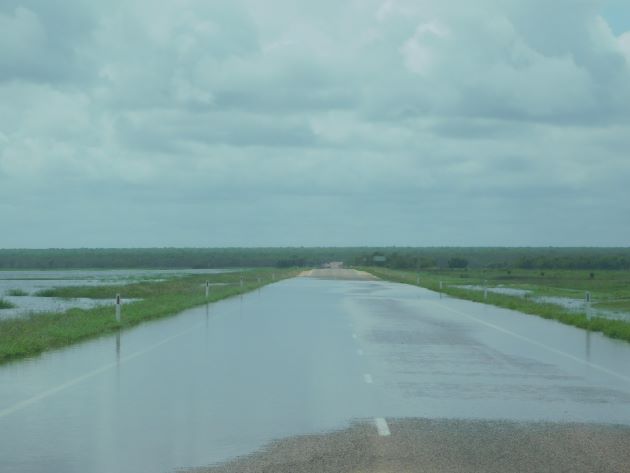
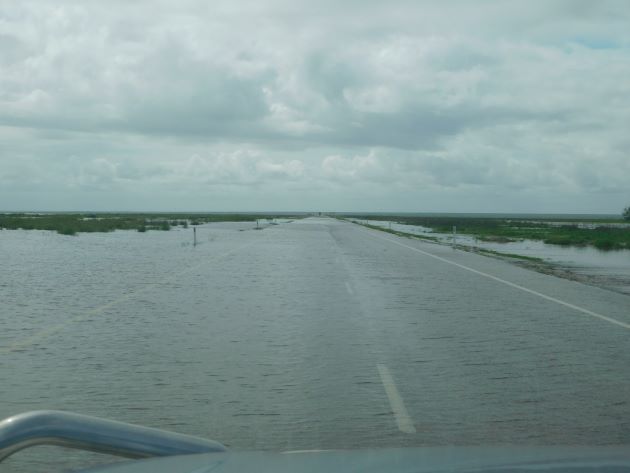
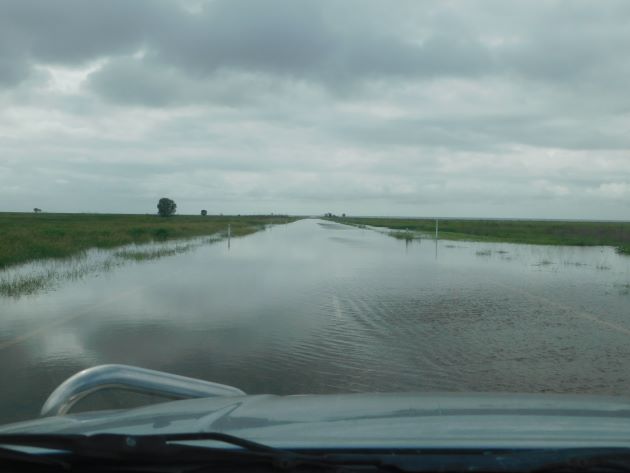
Driving across Roebuck Plains

Station access is limited unless you like swimming!
Although there are not huge numbers of ducks in the area at the moment they will be very spread out now the land is flooded. There can actually be too much water for ducks!
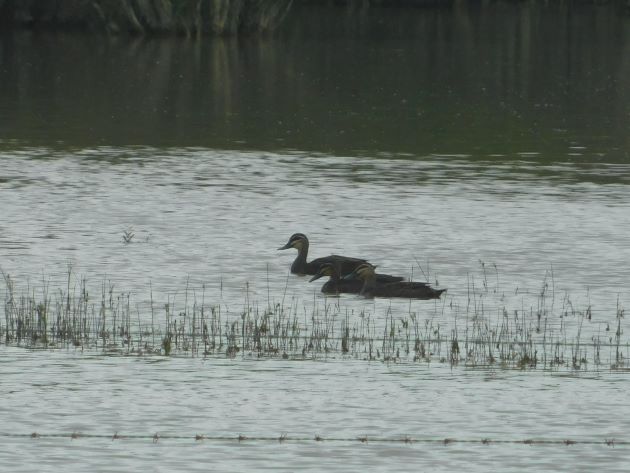
Pacific Black Ducks
There were a lot of birds on the move and there were small flocks of Glossy Ibis crossing the highway as we drove. Hopefully they will consider breeding in the area like they did in 2017 when the land was also flooded for an extended period of time. I took the photo below through the windscreen under thick cloud cover, so please forgive the quality!
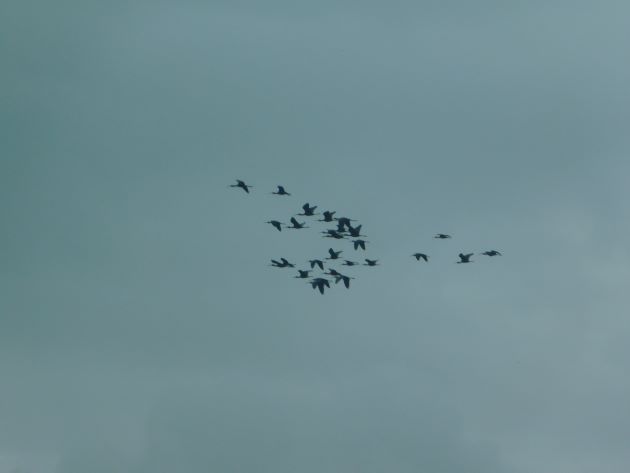
Glossy Ibis on the move
There has been a pair of Black-shouldered Kites that often show up on Roebuck Plains most years. It is unclear if it is always the same birds, but it was lovely to observe courtship behaviour as we drove. It didn’t take long and the Black-shouldered Kites settled in one of the few trees across the length of the plains.
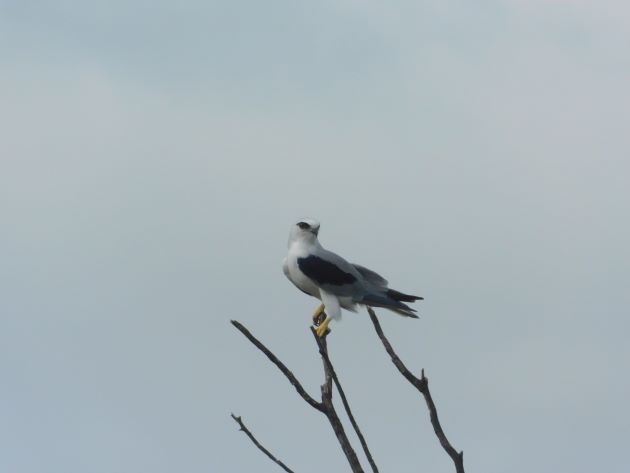
Black-shouldered Kite
There are already hundreds of Whiskered Terns in the area and there is no shortage of food for them. There are also Swamp Harriers that are making the most of the new swamp!
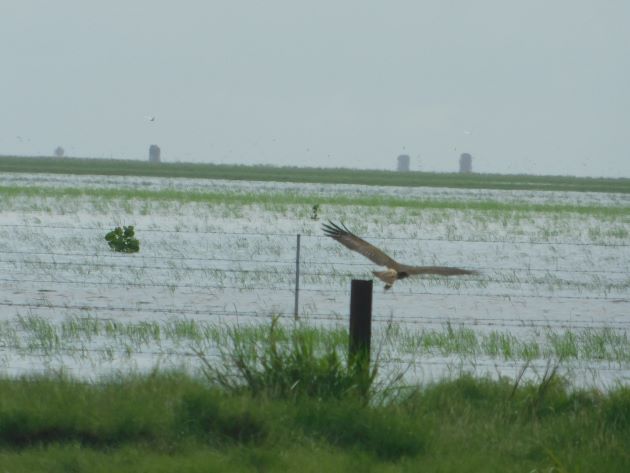
Swamp Harrier
There are now hundreds of Magpie Geese visible from the highway, so it is highly likely there are significantly more than can ever be observed when the land is so flooded. It won’t take long and they will start to breed like they did here in 2017 and 2018. It is anybody’s guess how they predicted the rain was coming to our area and where they set off from to take advantage of the flooded landscape.
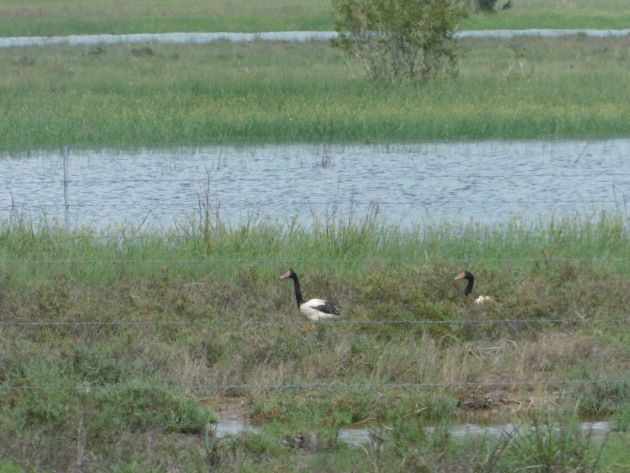
Magpie Geese looking for some higher ground!
It pays to have your car window open even if just a little to listen out for the smaller birds. Red-backed Fairy-wrens were vocal in the long grass. The Golden-headed Cisticolas were climbing as high as possible in the grass and singing to their heart’s content!
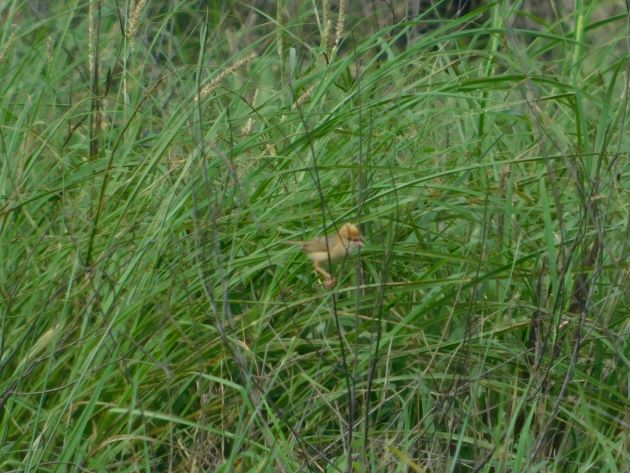
Golden-headed Cisticola singing away
At any opportunity over the upcoming weeks and months we will be keeping an eye on the changes across the plains. The water has receded now, so it is not quite as deep when you drive across the plains. You can easily confirm if the highway is open by checking the Main Roads Travel Map. It may not have rained in town, but it could easily have rained there and caused the water level to rise significantly.











Leave a Comment